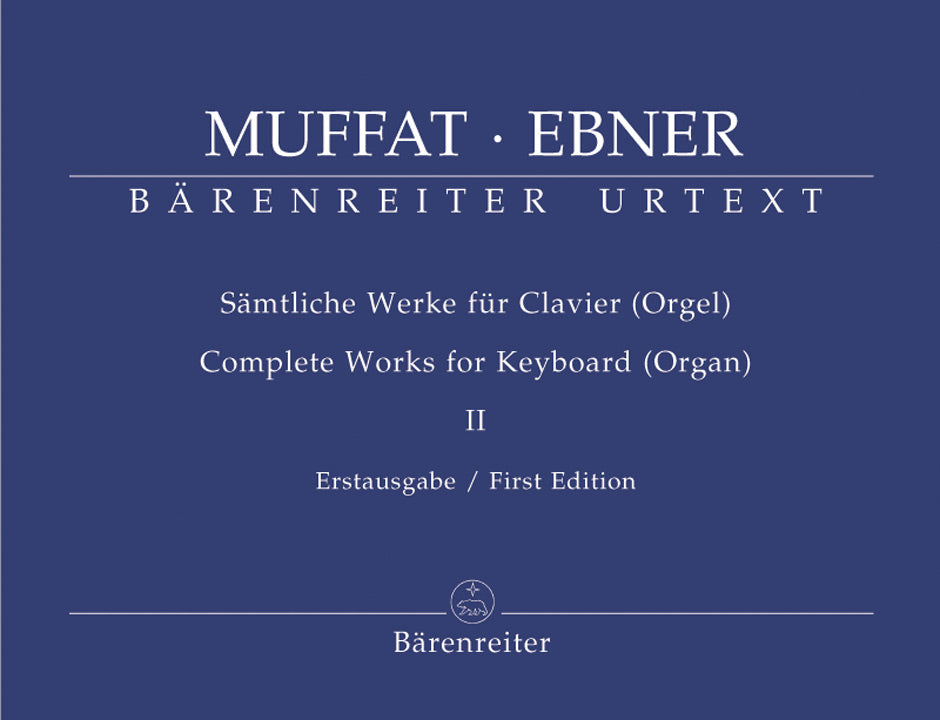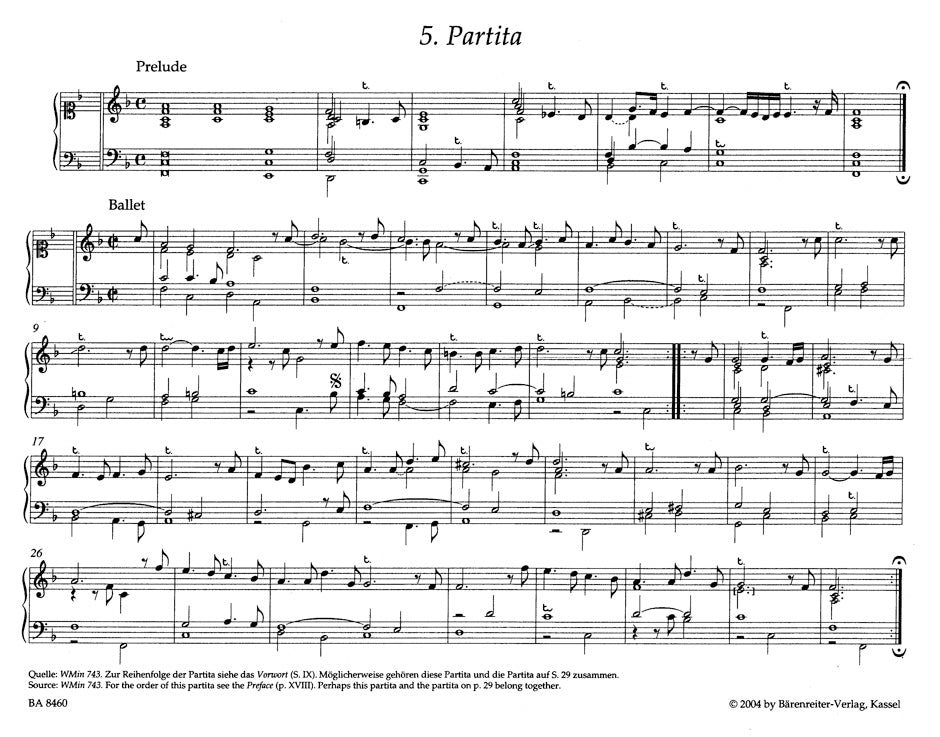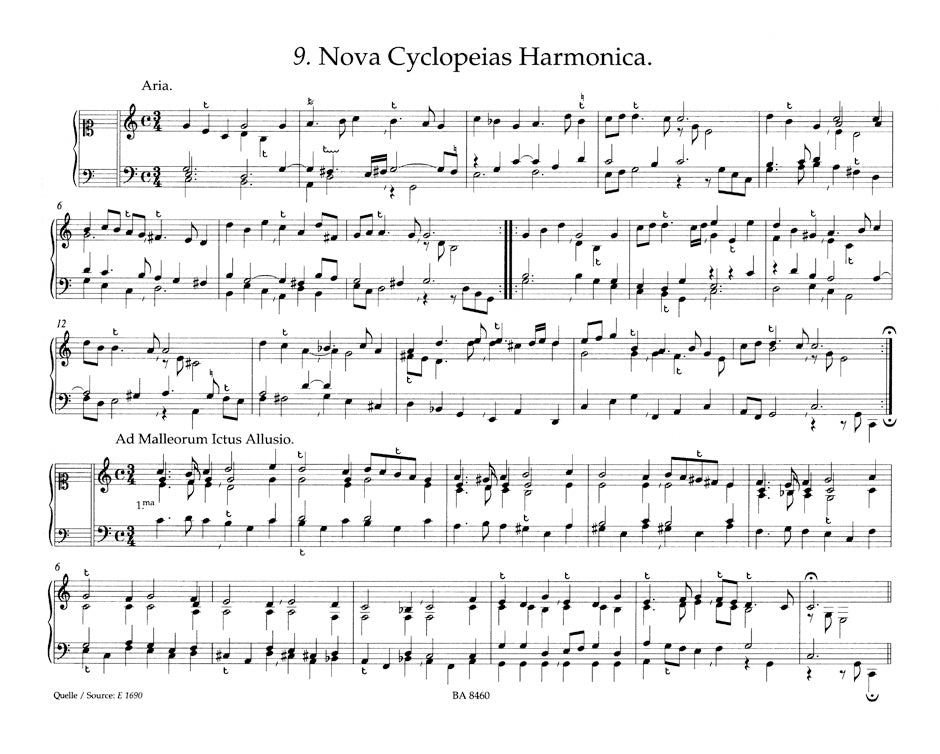Muffat/Ebner: Complete Works for Keyboard (Organ) - Volume 2
Expected to ship in about a week.
- Composers: Georg Muffat (1653-1704), Wolfgang Ebner (1612-1665)
- Editor: Siegbert Rampe
- Instrumentation: Keyboard
- ISMN:
- Size: 12.0 x 9.4 inches
- Pages: 86
- Urtext / Critical Edition
Description
It is a curiosity of musical scholarship that the clavier music of a composer of Georg Muffat's stature should remain unpublished apart from three pieces. Muffat, after all, was no less significant than Buxtehude, Pachelbel and the Krieger brothers as a forerunner of Johann Sebastian Bach.
Wolfgang Ebner was organist and later Kapellmeister at St. Stephens in Vienna at the same time as Johann Jacob Froberger. He taught the future Habsburg emperor Leopold I and wrote music that was the equal of Frobergers in virtuosity and contrapuntal rigour.
Contents:
Georg Muffat: Works of certain Authenticity, Part 2:
Partita in F Major - Prelude, Ballet, Gavotte, Menuet, Rigodon
Partita in F Major - Prelude, L'Amerande Prelude, Allemande, Courante, Gavotte, Menuete, Gigue l'Angloise, Les Pepheuses
Ciacona in G Major
Passacaglia in G Minor
Nova Cyclopeias Harmonica in C Major
Georg Muffat: Works of uncertain Authenticity, Part 2:
Partita in F Major - Fragment
Toccata in G Minor - Fragment
Wolfgang Ebner: Works of certain Authenticity, Part 2:
Toccata in G Minor
Toccata in D Minor
Aria Xxxvi modis uariata in A Minor
Courrente in D Major
Wolfgang Ebner, Works of uncertain Authenticity, Part 2:
Praeludium in G Major
Praeludium in D Minor
Wolfgang Ebner: Attributed Works: Roberday, François / Ebner, Wolfgang
Fugue & Caprice sur le mesme sujet in D Minor
Partita in A Major - Allemand, Double, Courante, Sarabanda, Gig
Allemand in G Minor
Couranta in G Minor
Sarabanda in G Minor
Courante in D Minor
Sarabanda in D Minor
Wolfgang Ebner, Treatise on Basso continuo "Eine kurtze Instruction and Anleitung zum General=Bass"
Publishers use a lot of words to describe what they sell, and we know it can be confusing. We've tried to be as clear as possible to make sure you get exactly what you are looking for. Below are descriptions of the terms that we use to describe the various formats that music often comes in.
Choral Score
A score for vocalists that only contains the vocal lines. The instrumental parts are not there for reference. Generally, cheaper than a vocal score and requires multiple copies for purchase.
Facsimile
Reproductions of the original hand-written scores from the composer.
Full Score
For ensemble music, this indicates that the edition contains all parts on a single system (there are not separate parts for each player). In larger ensembles, this is for the conductor.
Hardcover
Hardbound. Generally either linen-covered or half-leather.
Orchestral Parts
Similar to a wind set, this is a collection of parts. In the case of strings, the numbers listed are the number of copies included, though generally these are available individually (often with minimum quantities required).
Paperback
When publishers offer multiple bindings (e.g. hardcover) or study scores, this is the "standard" version. If you're planning to play the music, this is probably what you want.
Performance / Playing Score
A score of the music containing all parts on one system, intended for players to share. There are not separate parts for each player.
Set of Parts
For ensemble music, this indicates that there are separate individual parts for each player.
Solo Part with Piano Reduction
For solo pieces with orchestra, this is a version that contains a piano reduction of the orchestra parts. For piano pieces, two copies are typically needed for performance.
Study Score
A small (think choral size) copy of the complete score meant for studying, and not playing. They make great add-ons when learning concertos and small chamber works.
Vocal Score
A score prepared for vocalists that includes the piano/organ part or a reduction of the instrumental parts.
Wind Set
For orchestral music, this is a collection of wind and percussion parts. The specific quantities of each instrument are notated.
With Audio
In addition to the printed music, the edition contains recordings of the pieces. This may be an included CD, or access to files on the internet.
With / Without Fingering (Markings)
Some publishers prepare two copies - a pure Urtext edition that includes no fingering (or bowing) suggestions and a lightly edited version that includes a minimal number of editorial markings.





